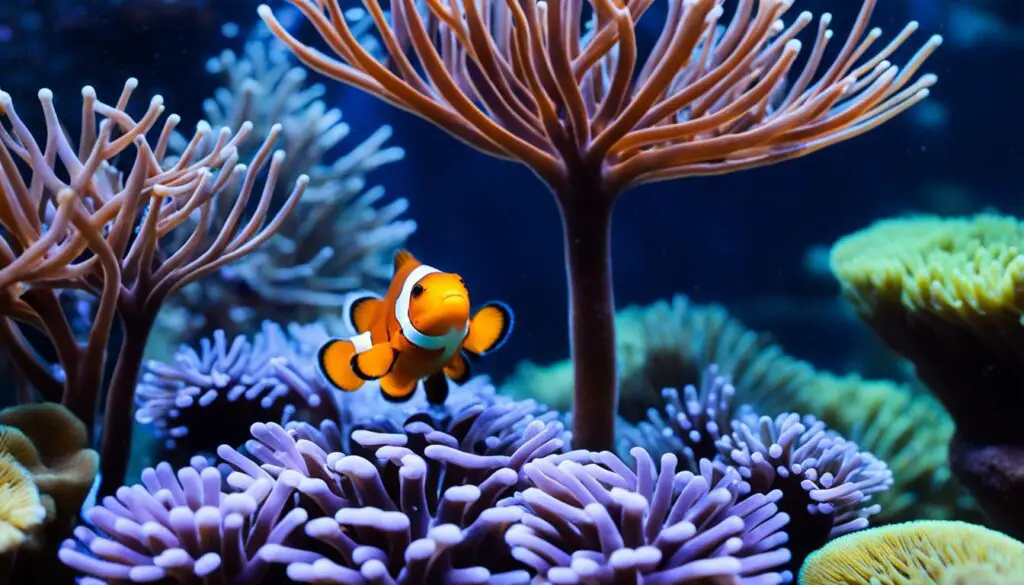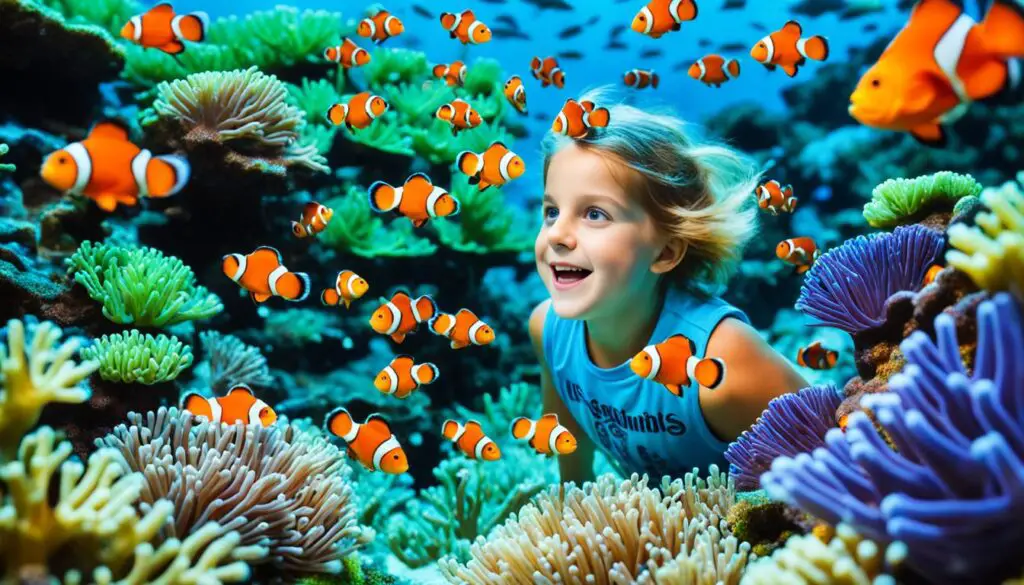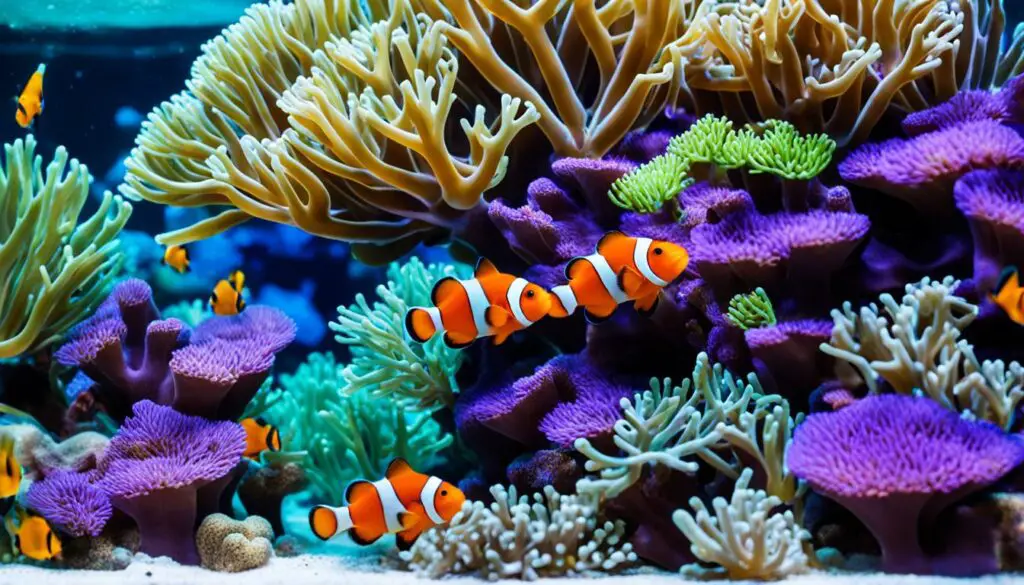Explore the Mysteries of Marine Life: Clownfish Secrets Revealed
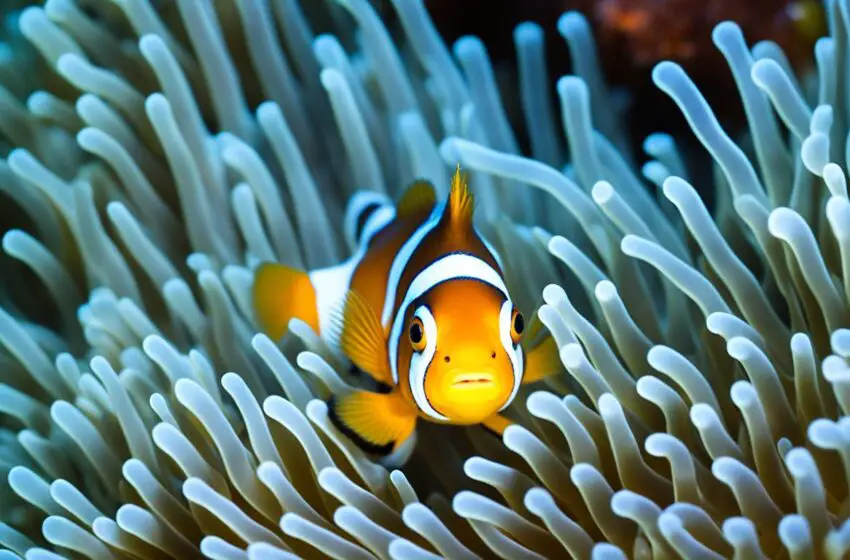
Welcome on an adventure to the deep sea! Today, we will uncover the secrets of the amazing clownfish. These little fish, known as anemonefish, are loved by many who have aquariums.
Clownfish have a special look, with white stripes on bright orange. They live with sea anemones, which protect them and give food.
There are many types of clownfish, each living with a certain sea anemone. This makes them look different. The University of Turku and the University of Western Australia are studying these fish in great detail.
We will learn about the importance of the white stripes and hormones for clownfish. We will also see how they live in complex groups.
Join me in this exciting journey to learn more about clownfish and marine life. Let’s start exploring!
Key Takeaways:
- Clownfish are known for their vibrant coloration, with white stripes on an orange background.
- They share a symbiotic relationship with sea anemones, which offer protection and a food source.
- Clownfish coloration varies depending on the species of sea anemone they associate with.
- The University of Turku and the University of Western Australia conducted a groundbreaking study on clownfish coloration.
- Our exploration will also uncover the role of white stripes and hormones in clownfish development.
The Importance of White Stripes and Hormones in Clownfish Development
Clownfish, with their white stripes, are a key example of how looks can matter. The white stripes are very important during their growth. A study by the l’Observatoire océanologique de Banyuls-sur-Mer and the CRIOBE lab showed us how much these stripes mean.
The study pointed out that the fish’s thyroid hormones control when white stripes show up. These stripes come out in a set order as the fish grows. And surprisingly, each clownfish species has its own stripe pattern.
So, why do these stripes matter besides making them look cool? They help clownfish know who is who. The stripes help prevent breeding with the wrong clownfish type. This keeps the species pure.
This knowledge helps us see how hormones make clownfish colorful. It tells us a lot about how these fish live and grow.
“The study’s results offer fascinating insights into the relationship between hormones and the appearance of white stripes on clownfish. By unraveling these intricacies, we gain a deeper understanding of the role hormones play in shaping marine life.” – Lead Researcher
The Significance of White Stripes
Clownfish white stripes are like their ID badge. They help them know who is family and who is not. This stops them from mixing with the wrong group, keeping their species strong.
In addition, the stripes say a lot about who’s the boss or looking for love. They help with the pecking order and love connections among the fish.
The bottom line? Clownfish stripes tell us a lot about their life. The study from the l’Observatoire océanologique de Banyuls-sur-Mer and the CRIOBE lab is a big step in understanding these fish.
| White Stripes and Hormones in Clownfish Development | Key Findings |
|---|---|
| Hormones play a vital role in the appearance of white stripes | • Hormone levels influence white stripe formation during larvae-to-juvenile metamorphosis. |
| Distinct patterns indicate different species | • Each species of clownfish possesses its unique white bar arrangement. • Number and positioning of white bars help with interspecific recognition. |
| White stripes serve social and behavioral functions | • White stripe patterns may convey social status and promote species-specific interactions. |
The Fascinating Social Structure of Clownfish
Clownfish are known for their vibrant colors and live with sea anemones. They have a very interesting way of living that helps them survive and make more fish.
There is a main, big female clownfish at the top. She is with a smaller male and then there are the young ones in order of size. This order helps keep everything stable in their home. If the big female dies, the male changes into a female. This change into a girl fish is called succession hermaphroditism.
When a male changes to a female, the next largest young fish becomes a male. This cycle goes on. It makes sure there are always enough females to have babies. And it keeps the family’s genes diverse.
Sometimes, there are fights among the clownfish. It can get serious, leading to wounds or death. It shows how they fight to stay alive and reproduce, sometimes for years.
Observing the Clowns of the Reef
Watching clownfish can teach us a lot about life on coral reefs. It shows us how important it is to have a good social structure and to adapt in the sea.
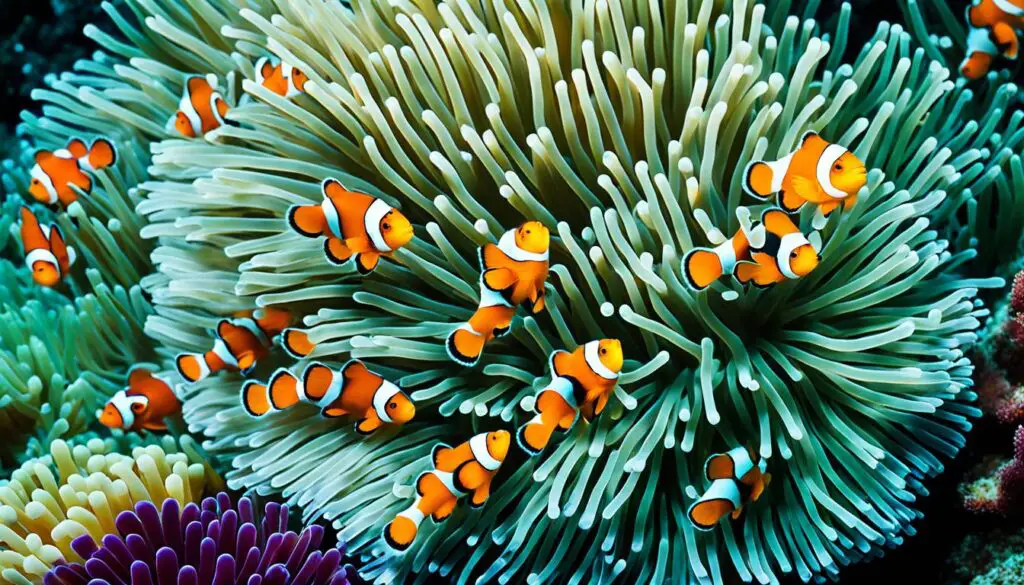
Clownfish, through their unique social system, are key to keeping reef life healthy and varied. Learning about how they live boosts our love for the ocean. We see the amazing connections under the sea.
Conclusion
Clownfish are fascinating creatures that have taught us a lot about the ocean. The University of Turku and the University of Western Australia found out why clownfish have white stripes. They learned it helps them know who is who in the ocean. This discovery helps us know more about different fish.
The way clownfish live together is also very interesting. They have a leader and a special way to have babies. This system helps their community survive. It’s cool to see how they take care of each other.
Learning about clownfish in tanks helps us learn more about the sea. Their bright colors and the way they live together are amazing. Studying clownfish shows us how wonderful and complex the ocean is. It makes us love and understand reef life even more.
FAQ
What is a clownfish?
A clownfish, also known as anemonefish, is a bright, colorful fish found in reef aquariums. It stands out with its vibrant orange body and white stripes. This fish teams up with sea anemones for safety.
How do the white stripes on clownfish contribute to their development?
Hormones control the growth of white stripes on clownfish. These stripes come in a set order as the fish grow from young to older stages. Different types of clownfish show unique white stripe patterns. These stripes help figure out what type of clownfish you see.
What is the social structure of clownfish?
Clownfish have an interesting social life, connected to their home in sea anemones. The group is led by a strong female. She is followed by a smaller male and smaller, younger fish in order of size. The kids’ place in the group is based on how big they are. If the top female dies, the main male turns into a female. The first in line among the younger ones then becomes a male. This keeps the group going.
Why is understanding clownfish social structure important?
Knowing how clownfish groups work sheds light on their special way of making more fish. This system helps the clownfish group grow and keep going. But sometimes, fights and pushy behavior can even cause some fish to die.
What are some secrets revealed by studying clownfish?
Research on clownfish has uncovered a lot. We now know why they have their bold colors and how they grow up. The use of hormones to show their white stripes and patterns helps them tell each other apart. Learning about how their group life works and how they reproduce helps ensure they stay around.

